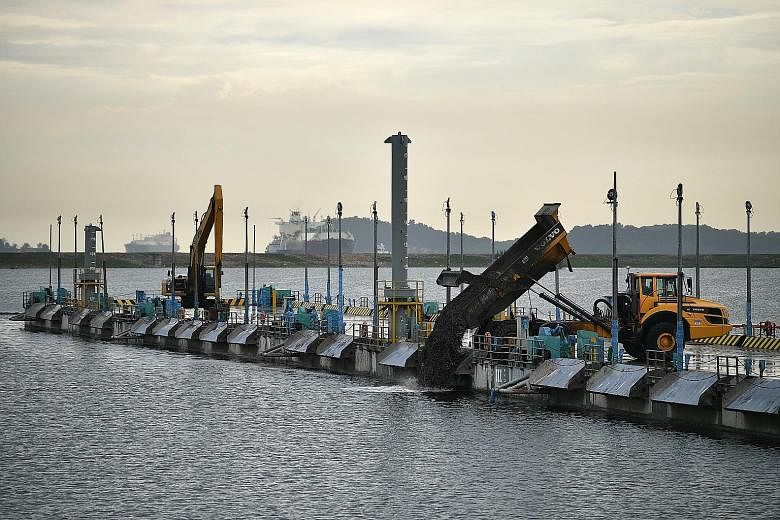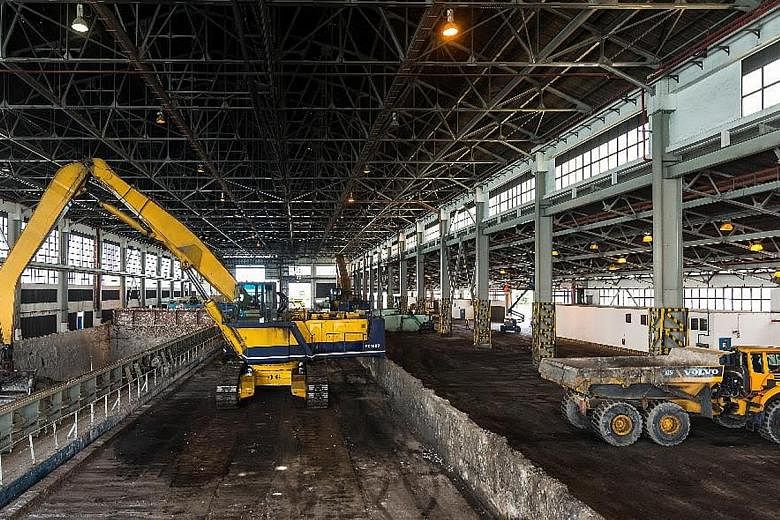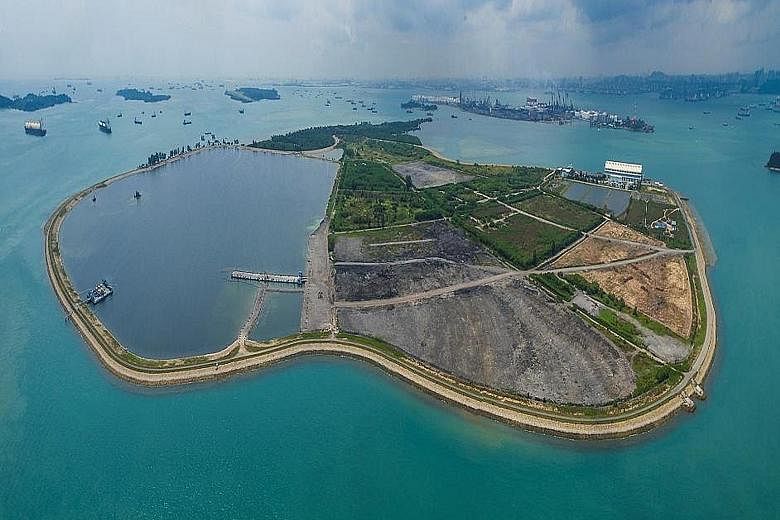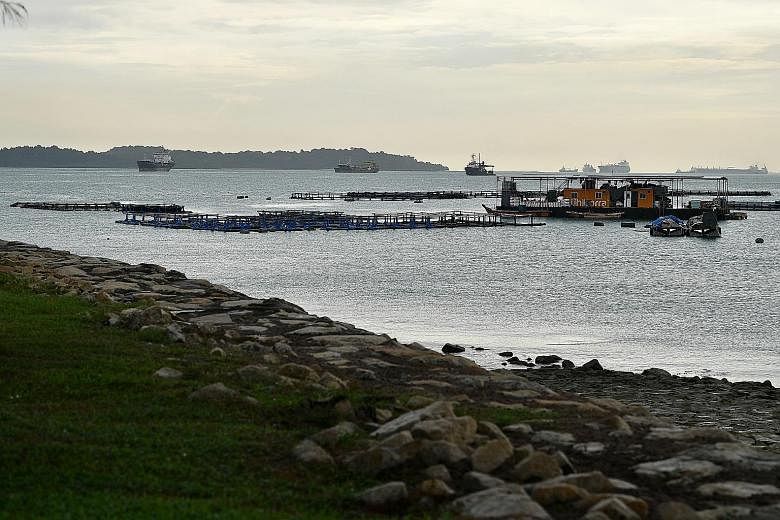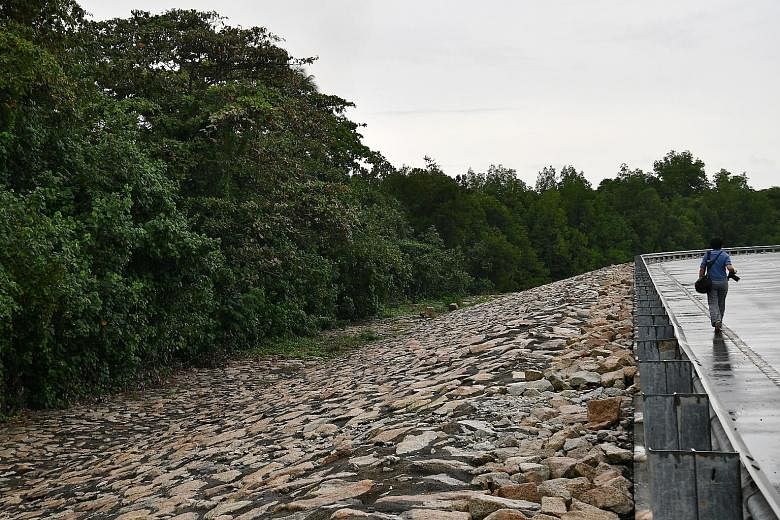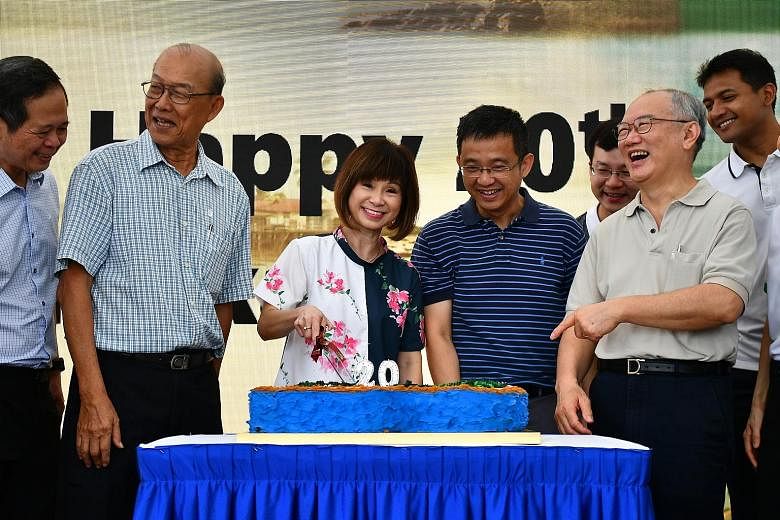The last thing anyone expected when work on an offshore landfill started in 1995 was that a thriving fish farm would eventually be set up in waters near the facility.
It certainly sounded improbable.
Said Mr Eng Tiang Sing, Semakau Landfill's former deputy chief engineer: "When you think of a landfill, people always think that it is filthy, dirty and polluted. But Barramundi Asia was so confident that the water here is clean that they decided to rear their fish here."
Today, the local barramundi farm in the waters off Singapore's only landfill boasts an expected annual yield of 6,000 tonnes, more than the total output of Singapore's 120 or so other fish farms last year.
"This is testament to our capability to keep the surrounding area of Pulau Semakau clean," he said.
Treatment plants on the island ensure that excess wastewater is treated properly before being released into the sea.
To protect the coral teeming around the island, the team building the landfill employed silt traps to stop sediment from overflowing during the construction process and planted 400,000 mangrove saplings to replace the 13.6ha of mangrove swamps that had to be destroyed during construction.
As a result of these efforts, the 350ha landfill - created from the sea space between two offshore islands about 8km south of mainland Singapore - is now home to green spaces and about 80 species of birds, including the white bellied sea eagle and the great-billed heron.
Mr Eng, 65, was among the team of engineers recognised by Senior Minister of State for the Environment and Water Resources Amy Khor at the 20th anniversary of the landfill's opening yesterday.
Last month, the National Environment Agency also won the 2019 Hassib J. Sabbagh Award for Engineering Construction Excellence, presented by the World Federation of Engineering Organisations, for the development of Semakau Landfill, which was recognised as a model for engineering excellence and sustainable urban development.
Semakau faces reality check as it enters third decade
As the world's first offshore landfill enters its third decade, it faces a reality check on its lifespan.
The facility is expected to be full in 16 years, a decade earlier than previously projected.
"That is not too far away," warned Dr Khor.
"This highlights the urgent need to save Semakau and find ways to extend its lifespan beyond 2035."
More than 2,000 tonnes of waste - made up of 1,500 tonnes of incinerated ash and 600 tonnes of non-incinerable waste - are added every day to Semakau Landfill.
The Ministry of the Environment and Water Resources set a national target earlier this year to reduce the amount of waste sent to the island by 30 per cent by 2030 in order to extend its lifespan.
The Resource Sustainability Act passed earlier this year compels businesses to tackle three key waste streams: electronic (e-waste), food and packaging.
Under the law, large manufacturers and importers of electronics will be made responsible for the end-of-life collection and proper treatment of these products.
From 2021, new commercial establishments also have to set aside space for on-site food-waste treatment if large amounts of food waste are expected to be generated.
Last month, the ministry unveiled a temporary 105m-long footpath and 3D-printed concrete bench made with Newsand - construction material created from incinerated waste residue.
It is conducting field trials to further study how Newsand can be used for construction.
Dr Khor stressed that the Government's efforts alone will not be enough. "Extending the lifespan of our only landfill requires a whole-of-nation effort involving the Government, industry, community, households and individuals.
"Drawing on the inspiration of Semakau Landfill, I strongly encourage everyone to continue our 3R efforts to reduce waste generation and disposal," she said, referring to the efforts to reduce, reuse, recycle.
"It is only by working together that we can save our only landfill."
